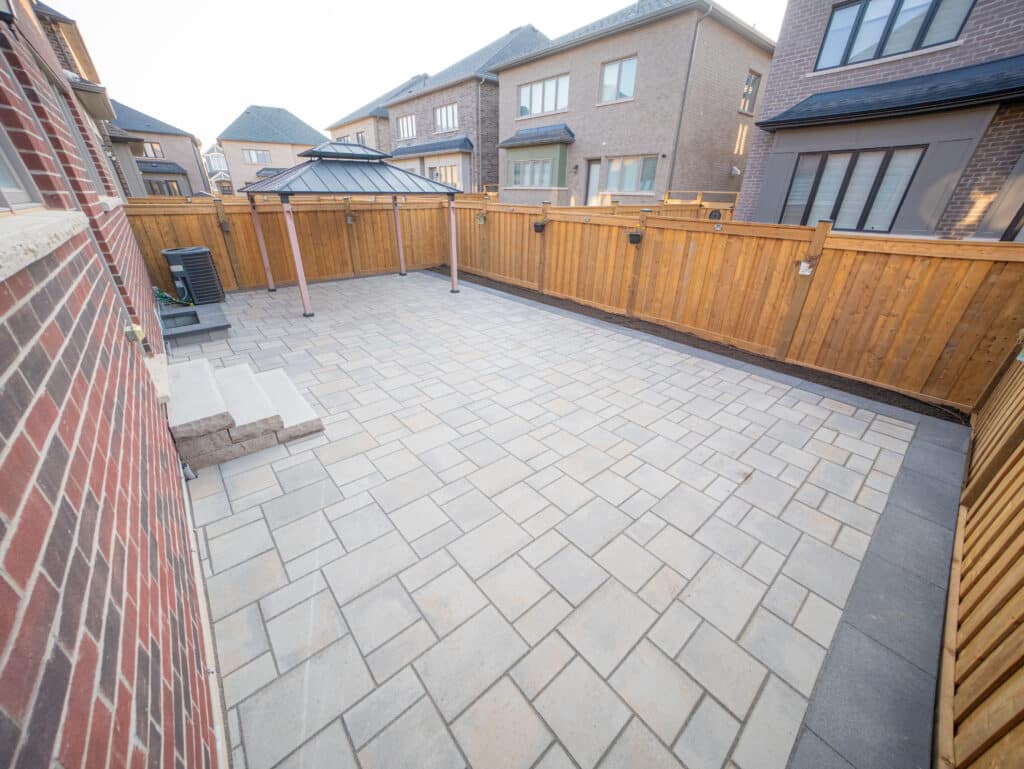Creating a stunning landscape requires mastering the delicate balance between hardscaping and softscaping elements. Understanding how these two components work together can help you achieve an outdoor space that’s both beautiful and functional.
Understanding the Basics
Hardscaping Elements:
• Patios and walkways
• Retaining walls
• Driveways
• Decks and pergolas
• Stone features
• Outdoor kitchens
• Fire pits
Softscaping Elements:
• Trees and shrubs
• Flower gardens
• Lawns
• Ground covers
• Seasonal plantings
• Natural privacy screens
• Rain gardens
The Art of Balance
Achieving harmony between hard and soft elements involves:
• Proportional distribution
• Complementary designs
• Functional integration
• Visual flow
• Seasonal considerations
Design Principles
Creating the perfect balance requires attention to:
• Scale and proportion
• Color coordination
• Texture variation
• Sight lines
• Traffic flow
• Maintenance requirements
Hardscaping Benefits
• Low maintenance
• Year-round functionality
• Reduced water usage
• Defined spaces
• Improved property value
• Weather resistance
• Enhanced accessibility
Softscaping Advantages
• Natural beauty
• Environmental benefits
• Temperature regulation
• Wildlife attraction
• Improved air quality
• Seasonal interest
• Natural drainage
Integration Strategies
Successful integration includes:
Phase 1: Planning
• Site analysis
• Usage requirements
• Budget considerations
• Maintenance capabilities
Phase 2: Design
• Element selection
• Layout planning
• Material choices
• Plant selection
Phase 3: Implementation
• Proper spacing
• Strategic placement
• Installation sequence
• Quality control
Maintenance Considerations
Hardscaping Maintenance:
• Seasonal cleaning
• Sealing when required
• Joint sand replacement
• Structural inspections
• Snow removal
Softscaping Maintenance:
• Regular pruning
• Seasonal planting
• Irrigation management
• Fertilization
• Pest control
Investment Value
A well-balanced landscape offers:
• Enhanced curb appeal
• Increased property value
• Reduced maintenance costs
• Improved functionality
• Year-round enjoyment
Common Design Mistakes to Avoid
• Over-hardscaping
• Insufficient plant spacing
• Poor drainage planning
• Incompatible materials
• Inadequate access paths
• Overlooking maintenance needs
Sustainable Practices
Incorporating eco-friendly elements:
• Permeable surfaces
• Native plants
• Rain gardens
• Smart irrigation
• Recycled materials
• Local sourcing
Creating your perfect outdoor space is about finding the right balance between hardscaping and softscaping elements. This harmony ensures both functionality and beauty while maintaining manageable maintenance requirements.
Ready to transform your outdoor space with the perfect balance of hard and soft elements? Contact us to start your landscape transformation journey today.
Remember: The most successful landscapes are those that seamlessly blend both hardscape and softscape elements to create a cohesive, functional, and beautiful outdoor environment.

